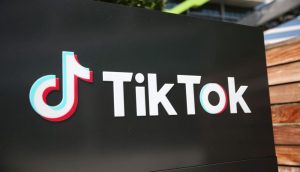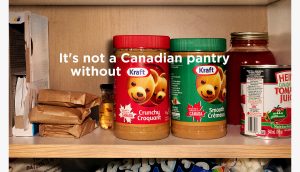MiQ has gotten into a habit of using its crystal ball to provide some kind of clarity to the fast-changing programmatic sector every year.
Based on a global survey of 300 mid-senior media planners, this year’s predictions cover everything from the continued rise of connected TV, the impact of going cookieless on programmatic and how to effectively map out omnichannel campaigns.
Joe Peters, MiQ’s managing director in Canada, recently used the findings from the survey – as well as work it has done with clients last year – to provide MiC with some answers to the big questions buyers and planners doing any work programmatic should be asking themselves as the year begins.
What are going to be the major forces shaping the programmatic sector in 2022?
There has been a significant increase in digital ad spending worldwide – seven out of ten ad dollars across digital platforms is being spent programmatically – and that trend doesn’t look like it’s going to end anytime soon. By 2025, nine out of ten digital ad dollars globally will be spent programmatically.
One of the most impactful trends we’ve forecast for this year is the continued shift from traditional cable TV to digital video. Digital video is the fastest growing channel of the advertising industry, and it is highly unlikely that this focus will change in 2022, especially with almost 85% of Canadian advertisers looking to boost their ad investments across connected TV compared to 2021 spending.
CTV is still considered a nascent platform for many, but are spending patterns in that area going to change?
Most marketers are likely to split their budgets between their linear and connected TV strategies, with a 26% increase in connected TV ad spending. In Canada, connected TV comes in as the top priority in media plan, as the media spending projections are extremely bullish for next year.
But the incremental spending for connected TV is not being diverted from the existing programmatic plans; the ad dollars may be coming from spend that stopped during the pandemic or are from traditional media channels. And so, there’s a huge opportunity now to bridge the gap between TV and digital campaigns by identifying your TV ad viewers and re-engaging them online. Advancements in the Canadian marketplace with TV specific data sets, such as Automated Content Recognition, will help accelerate smarter TV planning and buying across both linear and digital channels.
Are there any big changes that programmatic buyers need to prepare for?
Don’t take your foot off the gas when it comes to testing cookieless solutions. I predict a resurgence for cookieless advertising strategies in 2022. After Google shifted the deprecation date for third-party cookies to 2023, cookieless preparation fell down the priority list for many marketers. But starting cookieless planning early will be the key to a seamless transition into the cookieless future. The deprecation deadline will be here soon, and the industry needs test partners to ensure there are proven solutions in place to sustain performance before that time comes.
So how do they do that?
Start cookieless testing now! Early tests suggest cookieless strategies are already performing on par or even better than cookie-based ones, so there’s nothing to be lost from starting now, and everything to be gained.
We ran a cookieless test for Dell earlier last year where we used first-party data, as well as geo-contextual data to build powerful, addressable customer segments, all without a single cookie. The campaign resulted in a double return on ad spend compared to a standard cookie-based campaign, as well as uncovered tonnes of rich insights that will help power Dell’s future campaigns.
As marketers look ahead at their media plans, they should consider both the open and closed web collectively, as they are both equally important for the cookieless future. The best approach for advertisers is to use both authenticated and anonymous approaches to maximize intelligence, reach and performance. Other actions to consider are to conduct an internal audit to understand how future-proof your plans are and speak to your partners to understand their identity and privacy plans.
What do buyers need to consider when building a media plan for 2022?
According to our research, six in ten marketers struggle to connect the traditional advertising KPIs to relevant business outcomes globally. So think about your KPIs, and how you are going to evaluate them, carefully.
Data privacy is changing every day and the old attribution methods may not be possible in the same way we have been accustomed to in the past. KPIs, performance through brand, will all have their own measurement, attribution and optimization considerations through 2022. Understanding where business goals meet media metrics and what is possible to measure holistically vs. in silo is a great place to start before the media plan starts to build.
No matter what route marketers take, supply path optimization and cost transparency will influence spends and advertiser confidence. Build an effective supply path optimization strategy that evaluates the journey of your marketing dollar across multiple platforms. The programmatic universe keeps expanding with new products and environments, meaning marketers have to rethink how they can incorporate them into an efficient marketing strategy.
What do you predict will be the biggest challenges for the industry in 2022?
The industry certainly isn’t getting simpler. The onus on “programmatic” to drive many of the advancements of advertising in general is only increasing, and that’s a challenge we welcome.
Keeping up with the complexities of the above trends and opportunities represents a significant challenge for all invested in programmatic marketing. Just staying ahead on open and closed web developments, traditional channels and audiences migrating to digital platforms and data privacy policies changing takes a lot of people, time and, in many cases, product development work.
This interview has been edited for length and clarity.























